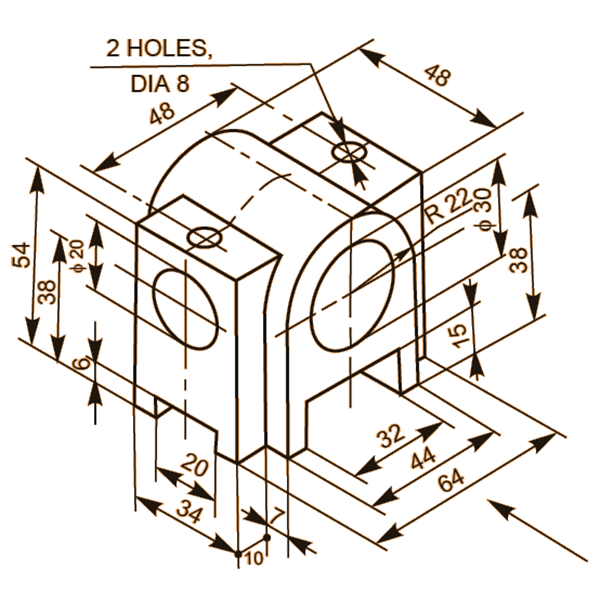We need only as many views as are required to describe the object fully. Although in theory the part could be placed in any orientation, the views are usually chosen to coincide with a natural symmetry of the part—for example, the front, right, and top of the car shown above. Orthographic views (like top, front, and side views) offer precise dimensions and shapes from different angles. Orthographic views can show us an object viewed from each direction. Web understanding the types, principles, and significance of engineering drawing views empowers engineers and designers to communicate design intent effectively, visualize complex geometries accurately, and ensure manufacturability and compliance with industry standards.
It also provides a brief introduction to gd&t (geometric dimensioning and tolerancing). We’ll turn hard copies or digital files into high quality custom blueprints. Based on the different types of views, the shape and size of the object/part are shown properly to the observer. Web our engineering drawings, blueprints & plan printing services: Orthographic views (like top, front, and side views) offer precise dimensions and shapes from different angles.
The views that reveal every detail about the object. Orthographic views (like top, front, and side views) offer precise dimensions and shapes from different angles. Dth and depth planes are shown at 30 degrees to the horizontal. Prepared to provide maximum clarity. They retain the positions shown below from the glass box projection.
It also provides a brief introduction to gd&t (geometric dimensioning and tolerancing). Usually, a number of drawings are necessary to completely specify even a simple component. In addition, all of the views are aligned. Web a multiview drawing usually consists of three views: While three views are standard, keep in mind that there are many objects that only need two views and some that only need one view to describe it. A common use is to specify the geometry necessary for the construction of a component and is called a detail drawing. The height dimension is common to the front and side views. Orthographic views can show us an object viewed from each direction. An orthographic view or orthographic projection is an approach to depicting a 3d object in 2d. As a result, a 2d view must convey all information required for part manufacture. Web which views should one choose for a multiview drawing? Dth and depth planes are shown at 30 degrees to the horizontal. We support mechanical and structural engineering professionals. Web the three standard views are the top, front, and right side. Web the orthographic view is the core of an engineering drawing.
We'll Handle All Of Your Plan Printing Requirements.
We will go step by step, explaining every element of the section view. Web different views in engineering drawings provide comprehensive visual information about an object. Web the video below covers the fundamentals, including the different types of views, first and third angle projection methods, dimensioning, tolerancing, best practices when creating drawings. A detailed drawing establishes item identification for each part depicted thereon.
Web The Two Main Types Of Views (Or “Projections”) Used In Drawings Are:
Without different views, engineering drawings cannot exist, so understanding how views are used on drawings is a critical. They retain the positions shown below from the glass box projection. Prepared to provide maximum clarity. We’ll give you the clearest custom engineering drawings, blueprints and.
Orthographic Views (Like Top, Front, And Side Views) Offer Precise Dimensions And Shapes From Different Angles.
We’ll turn hard copies or digital files into high quality custom blueprints. We support mechanical and structural engineering professionals. Web understanding the types, principles, and significance of engineering drawing views empowers engineers and designers to communicate design intent effectively, visualize complex geometries accurately, and ensure manufacturability and compliance with industry standards. In an isometric drawing, the object’s vertical lines are drawn vertically, and the horizontal lines in the w.
From Medical Components, Or The.
The width dimension is common to the front and top views. There are three types of. We need only as many views as are required to describe the object fully. Section line, section reference arrow, section reference letters, hatch.









